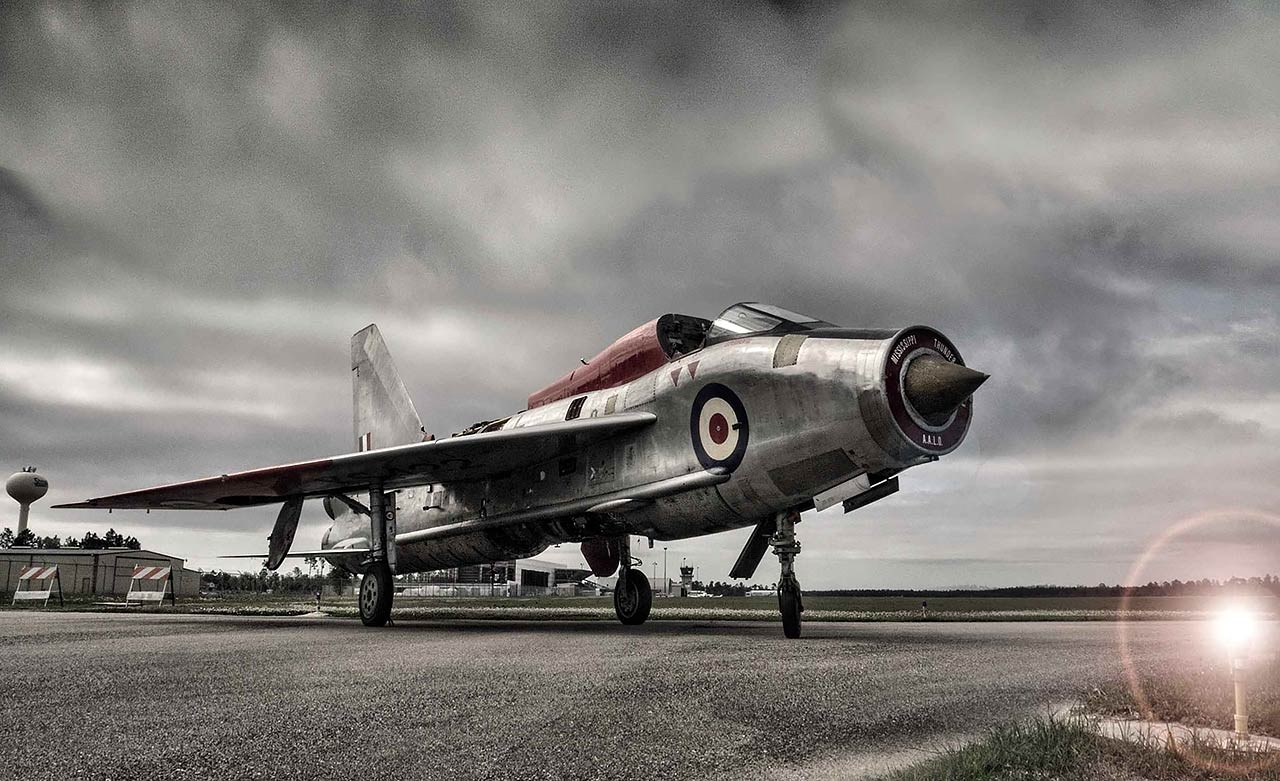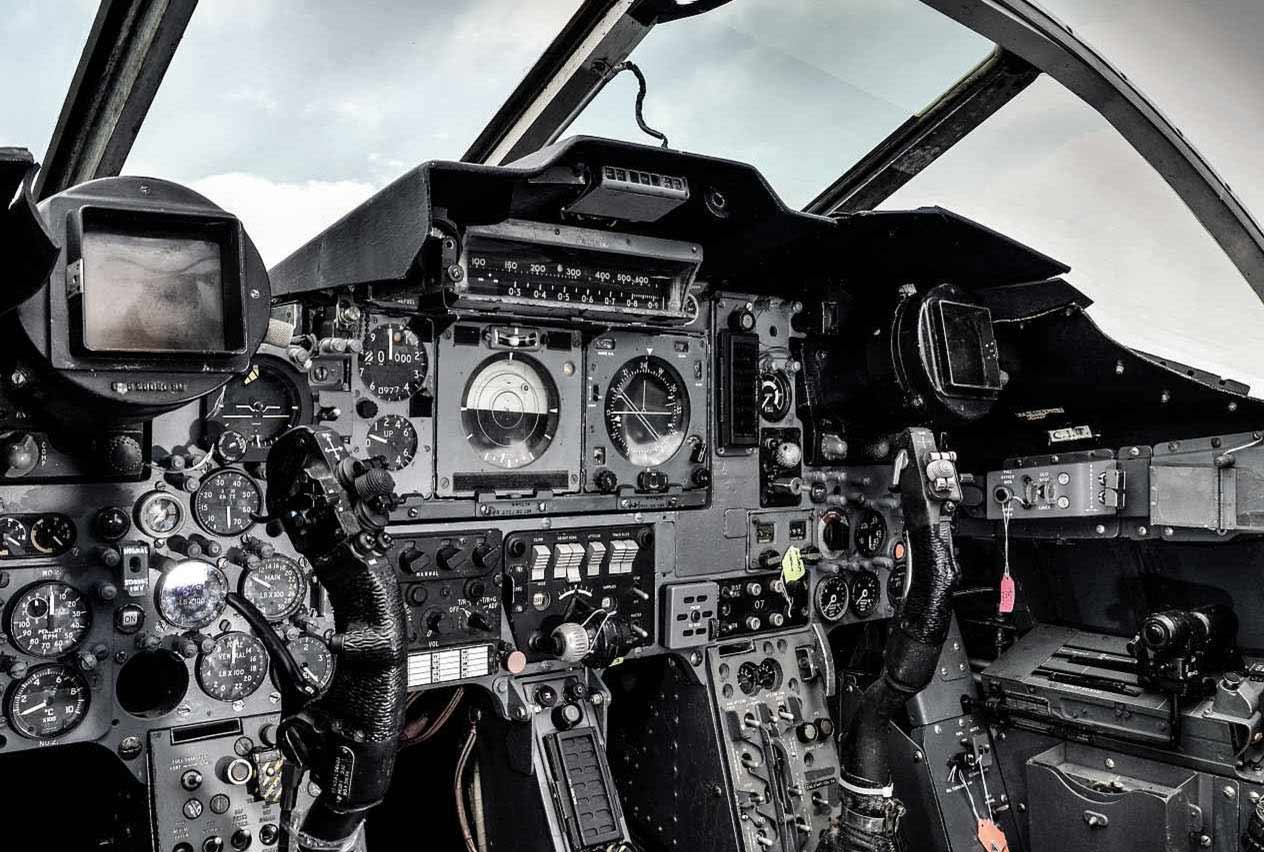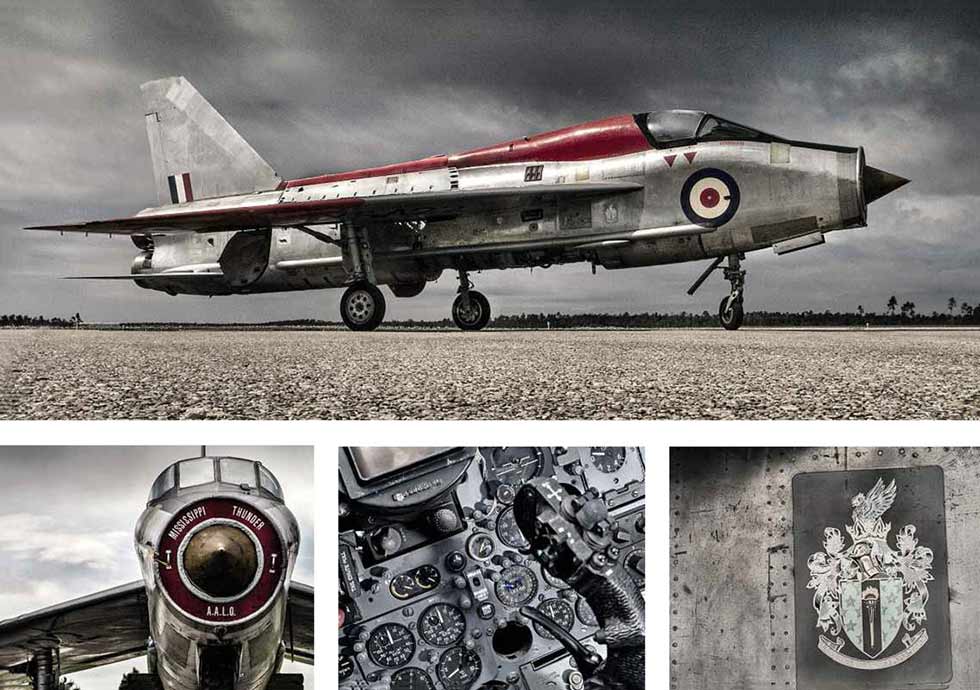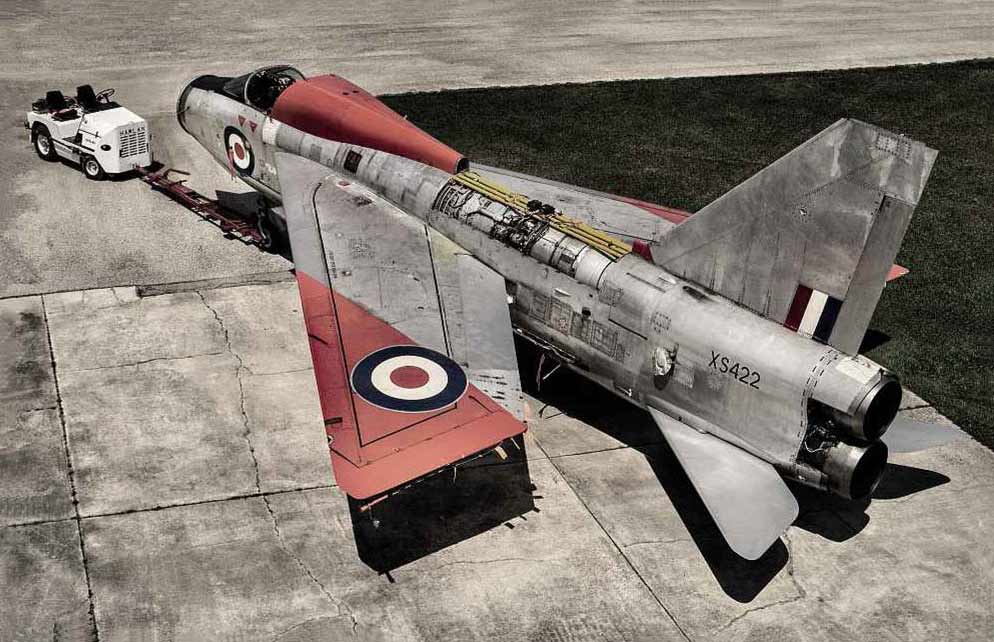
Lightning Jet Plane English Electric lightning. Basically a manned surface-to-air missile – bought for just £8000. Speed of Lightning. Deep in America’s Old South, a crack team has spent 13 slow years attempting to return one of Britain’s fastest war-birds to the air. Words Dale Drinnon. Photography Martyn Goddard.
A shiver up the spine is surely natural, I tell myself, when I first slide into that brutal-looking ejector seat. Glancing back along the rake of the evil, stubby wings doesn’t help, either. There are many reasons – all of them valid – why the Lightning was nicknamed the ‘Frightening’, but the most relevant is simple: Britain’s English Electric Lightning was possibly the meanest, boldest piece of ghter hardware produced during the entire Cold War, and the merest thought of unleashing its apocalyptic fury down the tarmac and across the North Sea to defend British sovereignty is enough to inspire rather sobering re ections on one’s place in the universe.

Except that this particular specimen isn’t quite up to any defending – not yet, anyway – and if it were, my 15 minutes of Cessna 150 expertise wouldn’t contribute much to the cause. And the sovereignty this plane is presently best positioned to protect is that of the State of Mississippi, the last foreign invader to remotely threaten the borders of which was, ahem, Great Britain, during the War of 1812. We Americans don’t get irony, you say? I beg to differ.
Still, there is method to this Mississippi madness. For one thing, if you’re a UK founded group restoring an aircraft, it’s handy to do so somewhere you can y it afterwards. And British authorities are notoriously less open-minded about certifying supersonic ex-combat machinery for civilian operation than their American counterparts. Stennis International Airport in Mississippi, a back-up landing site for the Space Shuttle, is also blessed with enough runway to host most anything currently able to get aloft, and is conveniently located mere miles from the Gulf of Mexico and tantalising, dare-not-dream opportunities to smash the sound barrier to minuscule smithereens.

Smashing barriers is furthermore the Lightning’s strong suit. Conceived in the early 1950s when the prospect of an extremely short-notice Soviet bomber attack on the UK was all too real, and entering service in 1959, the Lightning was intended to dash forth and waylay those attackers well short of British airspace – and really, that’s about all. Forget air superiority or ground support; this was basically a manned surface-to-air missile.
With two bellowing Rolls-Royce Avon turbojets, and no more fuel capacity than necessary to keep the pilot’s feet dry on the return trip (maybe), the Lightning enjoyed a better than 1:1 thrust-to-weight ratio, and could go vertical as soon as the wheels came up, scream from take-off to 40,000 feet in two-and- a-half minutes, and blast through Mach 2. It was the first airplane anywhere to achieve supercruise – sustained supersonic operation without the use of after-burners.
Nothing else of the time, or of some substantial time thereafter, could quite match the Lightning’s combination of agility, acceleration and raw speed, particularly at altitudes where the sky starts turning black. Ripping the throttles on this bad boy must take bigger stones than straddling a shell from the Paris Gun and smacking the primer with a sledgehammer.
Like the similarly Götterdämmerung-worthy F-104 Starfighter, however, or a Top Fuel dragster, or a hydrogen bomb, it was a complicated instrument beyond the capabilities of the merely ‘brave’, and not known to suffer fools, whether enemy or friend. Following final decommissioning by the Royal Air Force in the late ’80s, and with British regulations allowing virtually no domestic secondhand market, the number remaining in active private use worldwide was but a tiny handful.

That’s when Andrew Brodie started to get interested. Our friend Andrew is a world-renowned British specialist in the Citroën SM but, like most car guys, his fascination with cool technology extends in all directions.
In 1997, one such direction became the acquisition of an EE Lightning, because as Andrew says, ‘I suddenly discovered you could get into one for just £8000’, and he wrote a cheque for XS422, a surplus two-seat trainer dating from 1965.
It was only after Andrew began to contemplate the resto process that he realised ‘the purchase price was only a downpayment…’
He then followed the wisdom of many other first-time airplane owners (airplane ownership being among the few hobbies more expensive than a simultaneous divorce, motor racing career and coke habit) and established with some like-minded friends a syndicate, the Anglo-American Lightning Organisation, dedicated to making XS422 fly again. The AALO has since grown into a substantial network of supporters and donors, plus a volunteer technical team headed by retired RAF engineer Phil Wallis that regularly assembles at Stennis to carry on the hard graft. Anyone who has ever restored any automobile won’t be surprised that progress is slow, and aero-restos are more exacting yet, and far, far more complex. Besides the fact that minor screw-ups can result in much worse than coasting to rest on the hard shoulder, the Lightning happens to be a legendarily demanding subject; like an F1 car, every practical design consideration was secondary to the Need For Speed.

The vertically stacked engines, for instance, reduce frontal area and drag, but also complicate every powerplant servicing task, and internal space is at such a premium that the landing gear uses special narrow-section tyres to save room. This is not a project to be undertaken lightly, or knocked out on the odd weekend from your garden shed.
‘The lightning was basically a manned surface to-air-missile… every practical consideration was secondary to the Need For Speed’
So it’s softly, softly all the way, strictly according to the RAF book, and absolutely no shortcuts. After some 13 years of patient toil, the airframe, controls and electric refurbishments are now basically completed, the engines are in, and during November’s work session, they started and ran perfectly. Hopefully this spring, with a little fettling and a little luck and a little more funding (yes, it’s always, always about the funding), XS422 will make the big step to ground runs. In just a few more shifts, it could indeed be ready to roar down the runway, swing vertical, and bring forth Mississippi Thunder from English Lightning.
For more on XS422, or to find out how you can help the AALO, go to www. lightning422supporters.co.uk.
TECHNICAL DATA FILE SPECIFICATIONS 1965 English Electric / BAC Lightning T5
CREW Two, side-by-side
ENGINES Two Rolls-Royce Avon 301R turbo-jets
THRUST Dry: 12,690lb. Afterburn: 16,360lb
SPAN 34 10in (10.62m)
LENGTH 55 3in (16.84m)
HEIGHT 19 7in (5.97m)
WING AREA 458.5sq (42.6m²)
MAXIMUM SPEED Mach 2.27 @ 40,000
RANGE 800 miles
ZOOM CEILING >70,000
INITIAL RATE OF CLIMB 20,000 per minute
ARMAMENT SUITE Two Firestreak or Red Top air-to-air missiles





